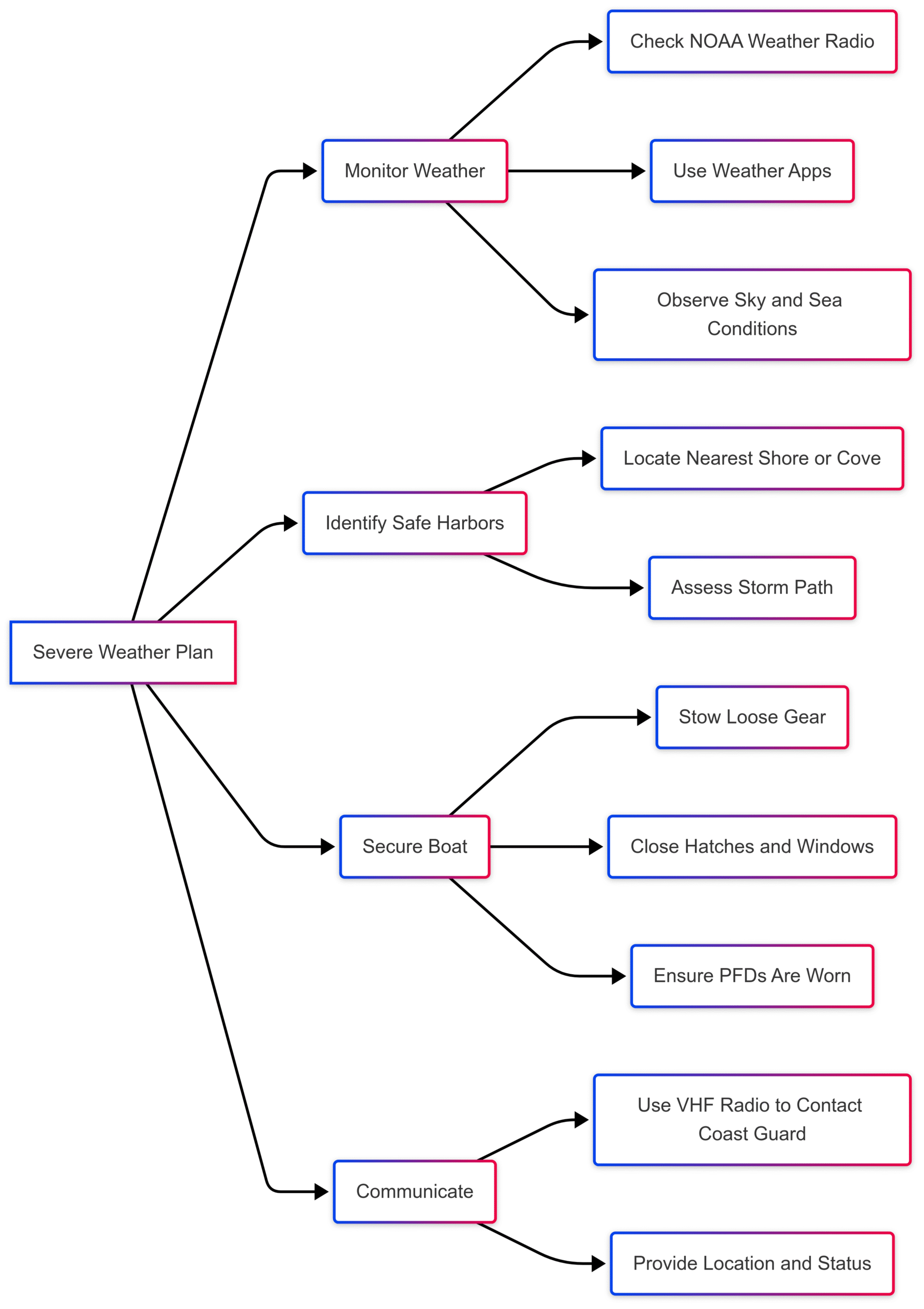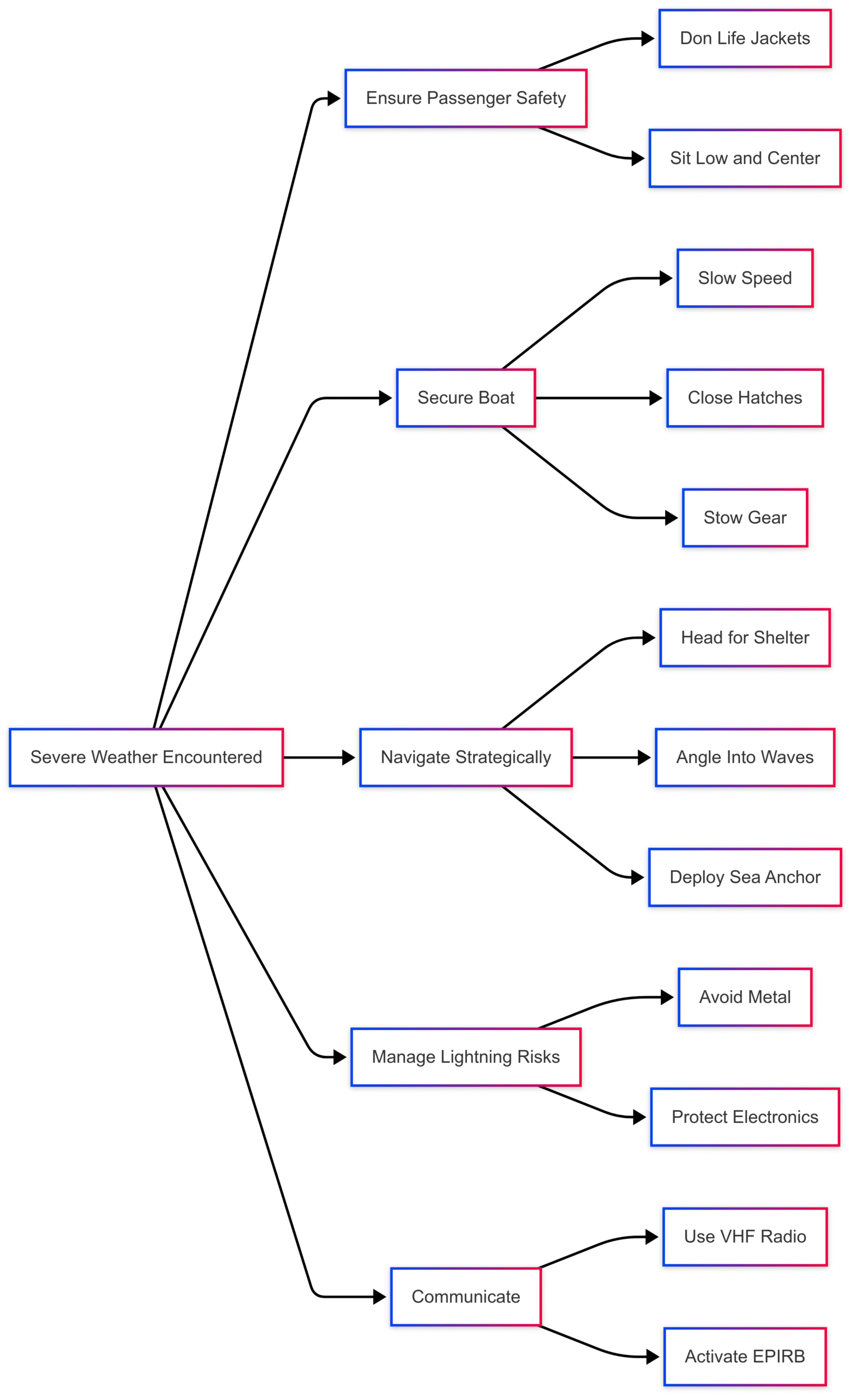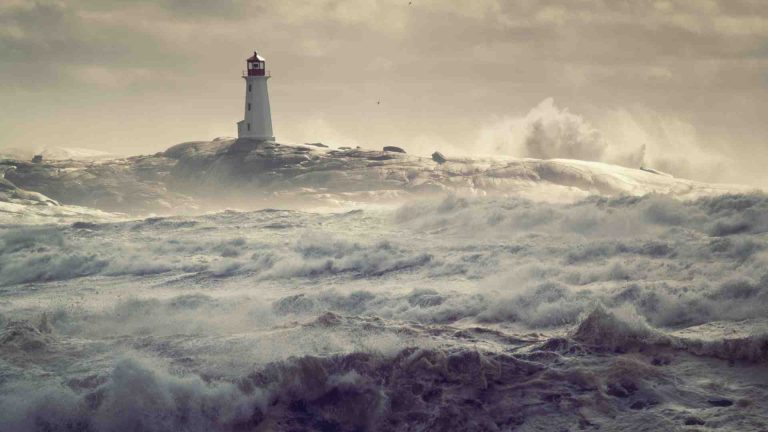Caught In Severe Weather While Boating: What To Do
Learn how to stay safe when caught in severe weather while boating. Essential tips, safety gear, and strategies to navigate storms effectively.
Boating offers an exhilarating way to connect with nature, whether you’re sailing on a serene lake or navigating the open sea. However, the unpredictability of weather can transform a pleasant outing into a dangerous situation. Severe weather, including thunderstorms, high winds, and rough seas, poses significant risks to boaters, from capsizing to lightning strikes. Being caught in a storm while boating requires quick thinking, preparation, and a clear understanding of safety protocols to protect yourself, your passengers, and your vessel. This comprehensive guide outlines the essential steps to take when faced with severe weather, ensuring you can navigate these challenges with confidence.
Understanding the Risks of Severe Weather
Severe weather can escalate rapidly, catching even experienced boaters off guard. Strong winds, often exceeding 20 knots, can create hazardous waves, especially for smaller vessels. Thunderstorms bring additional dangers, including lightning strikes, heavy rain, and sudden gusts that can exceed 70 mph, as noted in discussions on platforms like Reddit. These conditions can lead to overturned boats, damaged equipment, or passengers falling overboard. For smaller boats, such as an 18-foot Interlake sailboat, the risks are amplified due to limited stability and maneuverability in rough seas.
Lightning is a particular concern, especially for sailboats with tall masts that can act as lightning rods. While some boats are equipped with grounding systems to divert lightning energy, these are not foolproof, and nearby strikes can still cause significant damage to electronics or pose electrocution risks. Fog, heavy rain, and reduced visibility further complicate navigation, increasing the likelihood of collisions or running aground. Understanding these risks underscores the importance of preparation and proactive decision-making.
Pre-Boating Preparation: The Foundation of Safety
Preparation is the cornerstone of safe boating, especially when severe weather is a possibility. Before setting out, take these critical steps to ensure you’re ready for unexpected conditions.
Check Weather Forecasts
Always review the weather forecast for your boating area using reliable sources like the National Weather Service (NWS) or NOAA Weather Radio. Pay attention to marine-specific advisories, such as:
- Small Craft Advisory: Winds of 20–33 knots, indicating challenging conditions for smaller vessels.
- Gale Warning: Winds of 34–47 knots, dangerous for most boats.
- Storm Warning: Winds of 48 knots or higher, posing severe risks.
- Tropical Storm Warning: Winds up to 63 knots, signaling an approaching tropical storm.
- Hurricane Warning: Winds of 64 knots or more, requiring immediate action.
- Special Marine Warning: Short-term hazardous conditions with winds of 34 knots or more.
Use weather apps with real-time radar, such as AccuWeather or Windy, to monitor conditions while on the water. As one Reddit user emphasized, checking radar can prevent being “surprised” by thunderstorms, especially in areas like Long Island Sound with reliable cell reception. Watch for visual cues like darkening skies, building clouds, or a “smudge” line on the horizon, which may indicate an approaching storm.
Equip Your Boat with Safety Gear
Having the right equipment on board can mean the difference between a manageable situation and a disaster. Essential safety gear includes:
| Item | Purpose | Specifications | Estimated Cost |
|---|---|---|---|
| Life Jackets (PFDs) | Ensure passenger safety in rough seas or if thrown overboard | USCG-approved, Type I or II for adults, properly fitted | $30–$100 each |
| Marine VHF Radio | Communicate with authorities or other vessels | Waterproof, with NOAA weather channels, long battery life | $100–$300 |
| Emergency Position-Indicating Radio Beacon (EPIRB) | Transmit location to rescue services | Internal GPS, registered with NOAA | $400–$1,000 |
| First-Aid Kit | Treat injuries during emergencies | Waterproof, includes bandages, antiseptics, and flares | $20–$50 |
| Flares | Signal distress | USCG-approved, handheld or aerial | $15–$50 per set |
| Sea Anchor | Stabilize boat in rough seas | Parachute-style, sized for boat length | $50–$200 |
| Bilge Pump | Remove water from the boat | Manual or electric, 500–1,500 GPH capacity | $30–$150 |
| Harnesses and Fasteners | Secure passengers and equipment | Adjustable, compatible with life jackets | $20–$100 each |
Practice using this equipment before your trip to reduce stress in an emergency. For example, knowing how to deploy a sea anchor or operate a VHF radio can save critical time during a storm.
Develop a Severe Weather Plan
Create a detailed plan that outlines procedures for monitoring weather, identifying safe harbors, securing the boat, and communicating with authorities. Share this plan with all passengers and ensure everyone understands their roles. A sample plan might look like this:

This plan ensures a structured response to severe weather, minimizing panic and confusion.
Immediate Actions When Caught in a Storm
If a storm hits while you’re on the water, swift and decisive action is essential to ensure safety. Follow these steps to manage the situation effectively.
Prioritize Passenger Safety
The first priority is ensuring everyone on board is safe. Have all passengers put on USCG-approved life jackets and secure them with harnesses if available. Direct passengers to sit low and near the centerline of the boat to enhance stability and prevent falls. As one Reddit user sailing an 18-foot Interlake noted, even strong swimmers can struggle in storm-driven waves, making life jackets non-negotiable.
Secure the Boat
Take immediate steps to prepare the boat for rough conditions:
- Slow Down: Reduce speed to maintain control while keeping enough power to steer into waves. This minimizes the risk of broaching, where the boat turns sideways and becomes vulnerable to capsizing.
- Close Hatches and Windows: Seal all openings to prevent water from flooding the cabin, which could weigh down the boat.
- Stow Loose Gear: Secure fishing equipment, coolers, and other items to prevent them from becoming projectiles. Use fasteners to keep gear in place.
- Turn on Navigation Lights: Increase visibility for other vessels, especially in low-visibility conditions like heavy rain or fog.
- Keep Bilges Clear: Use a bilge pump or bailer to remove water from the boat, reducing the risk of swamping.
Navigate Strategically
Navigating through a storm requires careful attention to the boat’s position and the surrounding environment:
- Head for Shelter: If possible, steer toward the nearest shore or a protected cove. Avoid open water or areas with strong currents. As a Reddit user advised for Long Island Sound, staying close to the marina allows a quick retreat if conditions worsen.
- Angle Into Waves: Approach waves at a 45-degree angle off the bow or stern to minimize impact and keep the propeller in the water. This technique, recommended by experienced sailors, prevents swamping and reduces the risk of capsizing.
- Use a Sea Anchor: If the engine fails or you need to stabilize the boat, deploy a sea anchor or a bucket tied to the bow to keep the boat pointed into the waves. This can reduce drift speed to approximately 0.7–2 knots, as noted in Storm Tactics.
Manage Lightning Risks
Thunderstorms often bring lightning, which poses a significant danger. To estimate the distance of a thunderstorm, count the seconds between a lightning flash and the thunderclap, then divide by five to approximate the distance in miles. If lightning is imminent:
- Avoid Metal: Stay clear of metal objects like masts, shrouds, or lifelines to reduce the risk of electrocution.
- Protect Electronics: Disconnect and store electronics in a Faraday cage, such as a microwave oven, to shield them from electrical surges.
- Stay Low: Gather passengers in the center of the cockpit or cabin, away from metal components.
While some boats have lightning grounding systems, their effectiveness is debated, as lightning can still cause unpredictable damage. As a Reddit user pointed out, even a nearby strike can induce significant energy, potentially frying electronics.
Communicate with Authorities
Use a VHF radio to contact the Coast Guard or nearby vessels if you’re in distress. Provide your location, the nature of the emergency, and the number of people on board. Stay calm and follow instructions from rescue personnel. An EPIRB can also transmit your position to search and rescue satellites, increasing the chances of a swift response.
Post-Storm Actions
Once the storm has passed, take stock of your situation to ensure a safe return to shore or continuation of your journey.
Assess Damage and Injuries
Check for injuries among passengers and administer first aid as needed. Inspect the boat for damage, such as leaks, broken equipment, or compromised electronics. Secure or repair any issues to prevent further problems.
Communicate Your Status
Use your VHF radio to inform authorities if you need assistance, such as a tow or medical support. Provide an updated position and status to ensure help arrives promptly.
Rest and Recover
Storms can be physically and mentally taxing. Allow passengers to rest, eat, and hydrate before resuming your trip. Reflect on the experience to identify lessons learned and improve future preparedness.
Advanced Strategies for Experienced Boaters
For seasoned boaters, additional tactics can enhance safety in severe weather:
- Heave-To: This technique involves adjusting sails and the rudder to stall the boat, allowing it to drift slowly while maintaining stability. It’s particularly effective for sailboats, as noted in Storm Tactics, with drift speeds as low as 0.7 knots when using a sea anchor.
- Reef Sails Early: If you anticipate strong winds, reef sails before the storm intensifies. As a Reddit user advised, reefing after winds pick up can be dangerous, especially on smaller vessels like an Interlake.
- Practice in Controlled Conditions: Gain experience in moderate winds and seas to understand your boat’s limits. A Reddit user recommended sailing in slightly challenging conditions to build confidence without risking a squall.
Choosing the Right Boat for Safety
The type of boat you operate significantly impacts your ability to handle severe weather. Smaller vessels, like an 18-foot Interlake, are more vulnerable to rough seas and require cautious navigation. Larger boats with robust hulls and advanced electronics, such as those offered by Formula Boats’ FormulaFlex Program, provide greater stability and customization options. Features like GPS, radar, and reinforced hulls can enhance safety in adverse conditions. While specific pricing varies, expect to invest $30,000–$100,000 for a well-equipped mid-sized boat, with additional costs for safety upgrades like EPIRBs or high-capacity bilge pumps.
Visualizing Storm Preparedness
To illustrate the steps for preparing for and responding to severe weather, consider this flowchart:

This chart provides a clear, actionable sequence for managing a storm, ensuring all critical steps are addressed.
Real-World Insights from Boaters
Insights from boating communities, such as Reddit discussions, highlight the importance of preparation and situational awareness. A sailor on Long Island Sound, concerned about thunderstorms, ultimately decided not to sail after reviewing small craft advisories and radar, opting for safety over risk. Others shared experiences of navigating storms by heaving-to, reefing sails early, or staying close to shore. These real-world accounts reinforce the need for proactive planning and the value of community knowledge in avoiding dangerous situations.
Conclusion
Being caught in severe weather while boating is a daunting challenge, but with proper preparation and quick thinking, you can navigate it safely. By monitoring weather forecasts, equipping your boat with essential safety gear, developing a severe weather plan, and taking immediate action during a storm, you can protect yourself, your passengers, and your vessel. Post-storm assessments and continuous learning further enhance your ability to handle future challenges. Whether you’re a novice boater or an experienced sailor, prioritizing safety ensures that your time on the water remains enjoyable and secure. Always remember: no trip is worth risking your safety. Stay informed, stay prepared, and sail smart.
Share Caught In Severe Weather While Boating: What To Do with your friends and Leave a comment below with your thoughts.
Read What Type of Boating Emergency Causes the Most Fatalities? until we meet in the next article.






